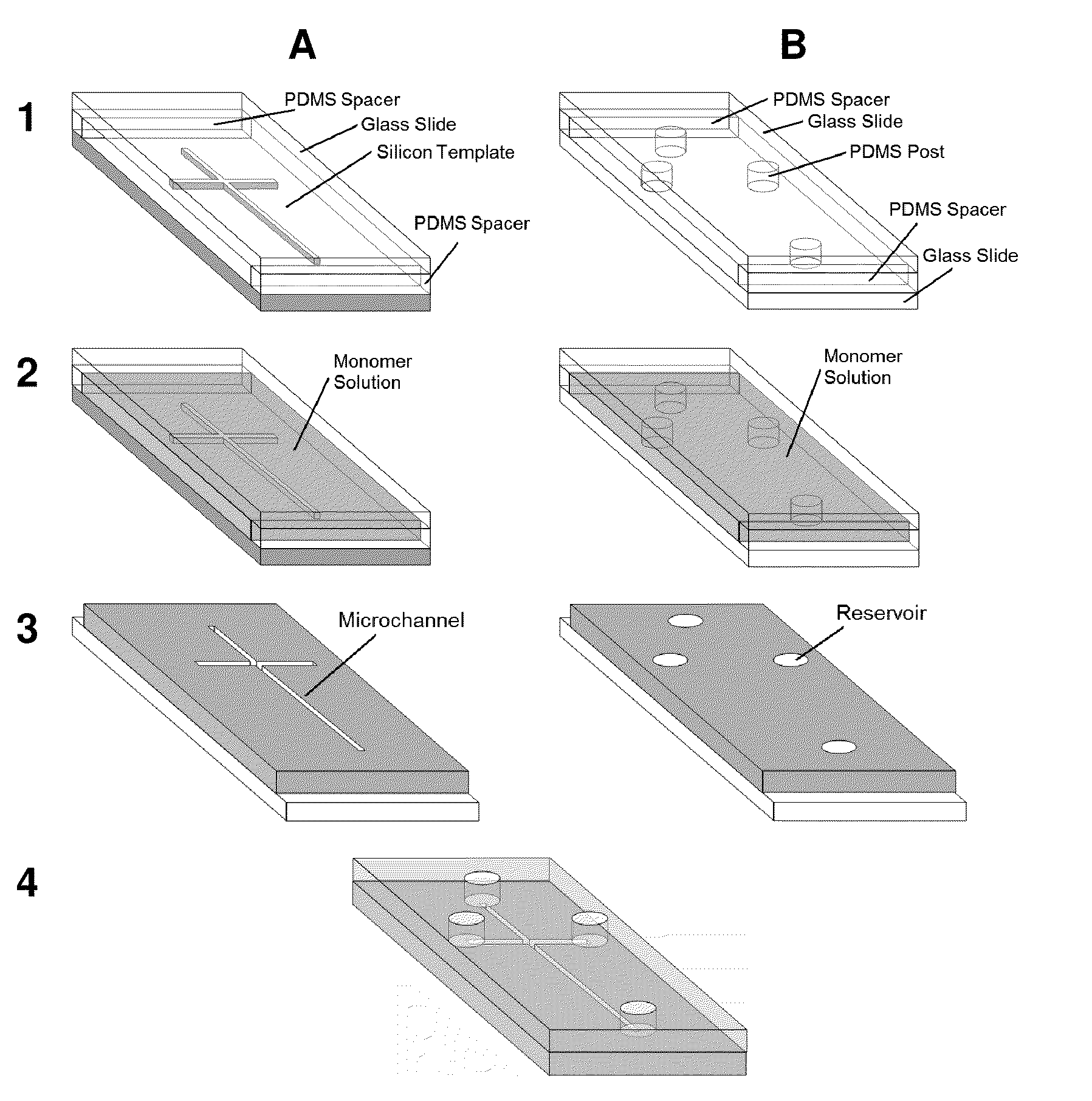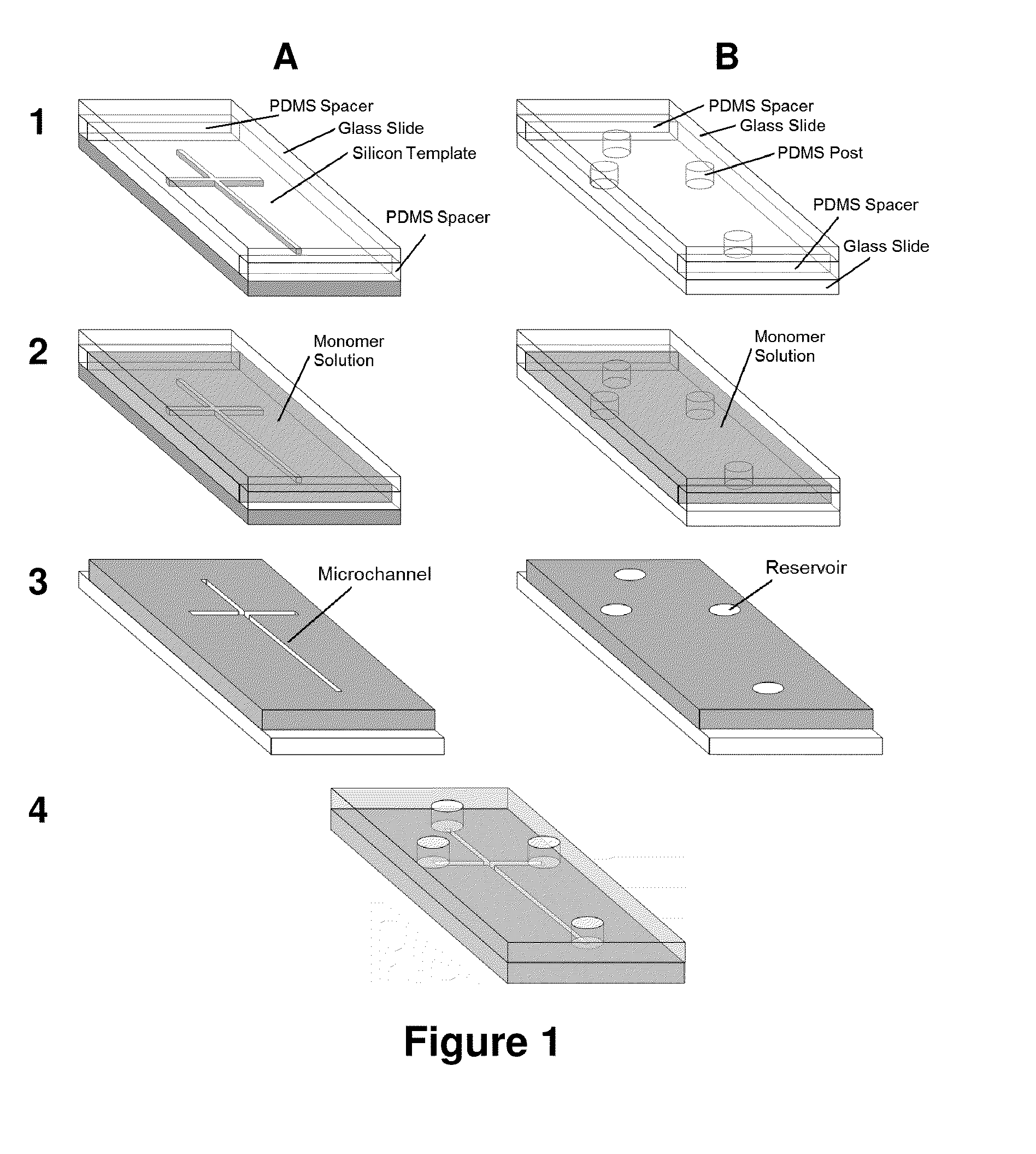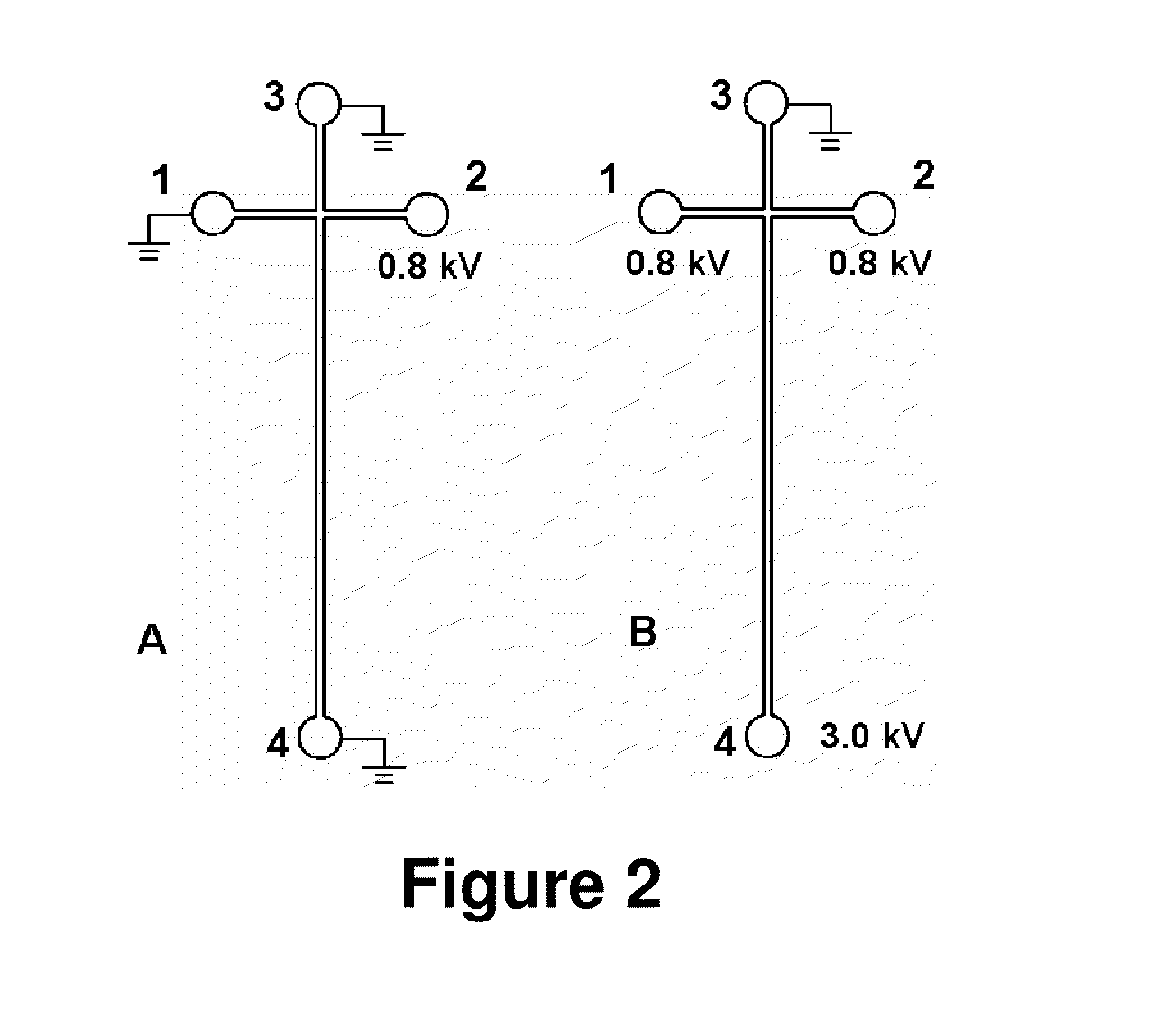Adsorption-resistant acrylic copolymer for fluidic devices
a technology of acrylic copolymer and fluidic device, which is applied in the direction of liquid surface applicators, decorative arts, coatings, etc., can solve the problems of affecting the performance of dynamic surface modifiers, affecting the stability of fluidic devices, and affecting the separation performance of samples, etc., to achieve convenient manufacturing and form, facilitate device fabrication, and facilitate the effect of rapid and cheaper
- Summary
- Abstract
- Description
- Claims
- Application Information
AI Technical Summary
Benefits of technology
Problems solved by technology
Method used
Image
Examples
example
Experimental Section
Materials
[0085]2,2′-Dimethoxy-2-phenylacetophenone (DMPA), poly(ethylene glycol) methyl ether methacrylate (PEGMEMA, MW˜1100), poly(ethylene glycol) diacrylate (PEGDA, MW˜258), and methyl methacrylate (MMA, 99%) were purchased from Aldrich (Milwaukee, Wis., USA). Na2CO3 and anhydrous Na2SO4 were obtained from Fisher Scientific (Fair Lawn, N.J., USA). Fluorescein isothiocyanate (FITC) was ordered from Invitrogen (Carlsbad, Calif., USA). Myoglobin, porcine thyroglobulin, β-lactoglobulin A, FITC-conjugated human serum albumin (FITC-HSA), gly-tyr (GY), phe-gly-gly-phe (FGGF), trp-met-asp-phe (WMDG) and phe-phe-tyr-arg (GGYR) were purchased from Sigma (St. Louis, Mo., USA). Ovalbumin tryptic digest was ordered from MicroSolv (Eatontown, N.J., USA). Pre-cleaned microscope slides with dimensions of 75×50×1 mm and 75×25×1 mm were obtained from Fisher Scientific (Pittsburgh, Pa., USA) and Hardy Diagnostics (Santa Maria, Calif., USA), respectively. The 18.2 MΩ-cm deionized...
PUM
| Property | Measurement | Unit |
|---|---|---|
| pH | aaaaa | aaaaa |
| concentration | aaaaa | aaaaa |
| transmittance | aaaaa | aaaaa |
Abstract
Description
Claims
Application Information
 Login to View More
Login to View More - R&D
- Intellectual Property
- Life Sciences
- Materials
- Tech Scout
- Unparalleled Data Quality
- Higher Quality Content
- 60% Fewer Hallucinations
Browse by: Latest US Patents, China's latest patents, Technical Efficacy Thesaurus, Application Domain, Technology Topic, Popular Technical Reports.
© 2025 PatSnap. All rights reserved.Legal|Privacy policy|Modern Slavery Act Transparency Statement|Sitemap|About US| Contact US: help@patsnap.com



